GSLV Mk.3 rolls out for launch of Indian moon mission – Spaceflight Now
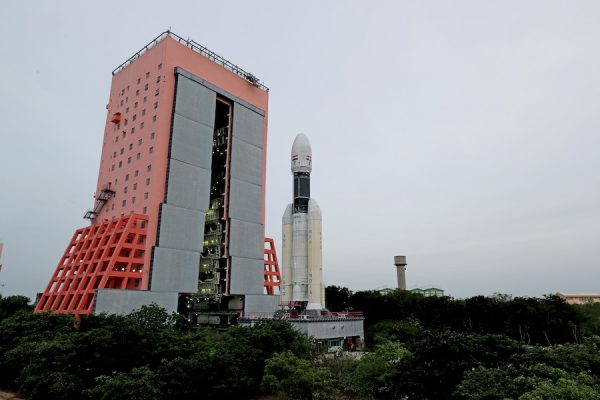
The 143-foot-tall (43.5-meter) rocket that will send aloft India’s Chandrayaan 2 moon mission Sunday has arrived on its launch pad on the Indian east coast.
The Geosynchronous Satellite Launch Vehicle Mk.3, or GSLV Mk.3, is set for liftoff at 2121 GMT (5:21 p.m. EDT) Sunday from the Satish Dhawan Space Center, India’s spaceport on the coast with the Bay of Bengal around 50 miles (80 kilometers) north of Chennai.
The launch is timed for 2:51 a.m. local time Monday in India.
The GSLV Mk.3 is India’s most powerful launcher. Indian space agency officials last year switched the launch of the Chandrayaan 2 mission from the less capable GSLV Mk.2 rocket after the spacecraft’s mass grew to exceed the mission’s original design.
The all-Indian launch vehicle and the moon-bound Chandrayaan 2 spacecraft rolled out of the Vehicle Assembly Building on July 7 at the space base, located on Sriharikota Island, on a mobile platform for the journey to the Second Launch Pad.
The rollout occurred after technicians stacked the launch vehicle’s components on the mobile launch platform inside the assembly building, and finally capped the rocket with the Chandrayaan 2 spacecraft, a three-in-one mission consisting of an orbiter module, a landing craft and a rover that will deploy from the lander after touchdown on the lunar surface.
Assuming the mission takes off Sunday — two days shy of the 50th anniversary of the launch of Apollo 11 — the spacecraft should arrive in orbit around the moon in early August, followed by separation of the lander from the orbiter for final descent and landing Sept. 6.
India is seeking to become the fourth country to achieve a soft landing on the moon, following the Soviet Union, the United States and China. The Chandrayaan 2 mission has cost around $142 million to design, develop and ready for launch, including the cost of the rocket and the spacecraft, according to the Indian Space Research Organization.
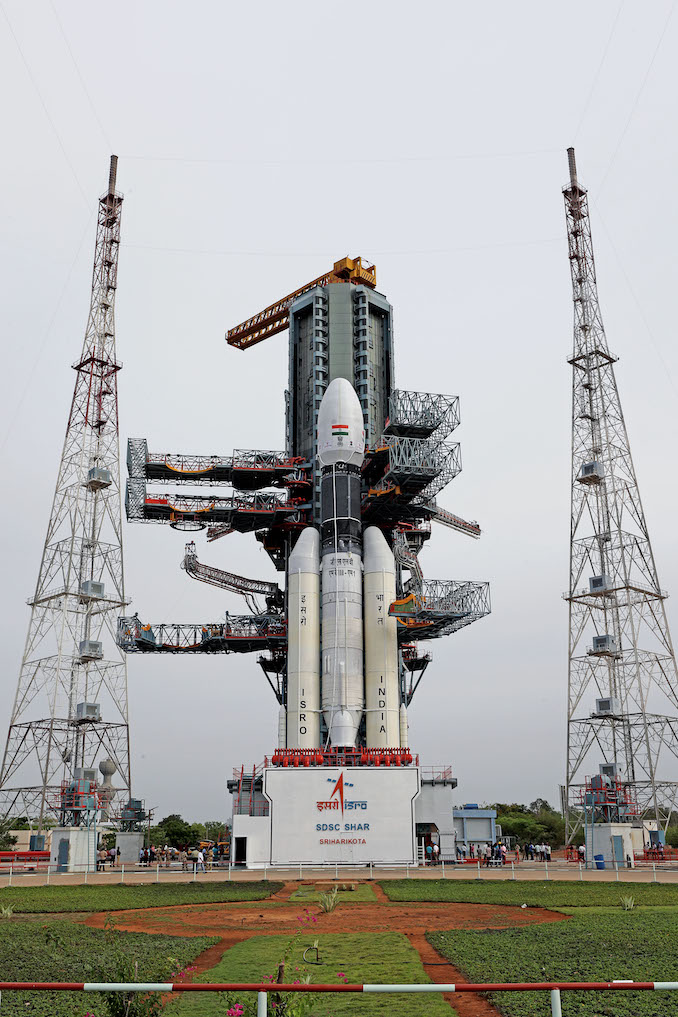
Since the rocket arrived at the launch pad, ISRO’s launch crew at Sriharikota has conducted two launch rehearsals, completed end-to-end checkouts of the rocket, connected pyrotechnics used for in-flight separation events, and accomplished control system checks on the GSLV Mk.3’s first stage.
The launch team also pressurized the rocket’s propellant tanks ini preparation for fueling.
The GSLV Mk.3 rocket will blast off off powered by two 86-foot-long (26.2-meter) S200 solid rocket boosters, generating a combined 2.2 million pounds of thrust. A core stage driven by two hydrazine-fueled Vikas engines will ignite at T+plus 1 minute, 50 seconds, followed by burnout and separation of the strap-on boosters around 30 seconds later.
Each of the S200 solid-fueled boosters will burn through their supply of more than 225 tons (205 metric tons) of pre-packed solid propellants.
The twin Vikas engines fired until around T+plus 5 minutes, 15 seconds, then give way to a cryogenic upper stage powered by liquid hydrogen and liquid oxygen to place the Chandrayaan 2 spacecraft in an elliptical transfer orbit stretching to a maximum altitude of more than 23,000 miles (38,000 kilometers) above Earth.
Chandrayaan 2’s on-board engines will push the spacecraft into higher orbits before breaking free of Earth’s gravitational grasp and heading for the moon, where it will enter orbit in early August.
The orbiter will steer the solar-powered spacecraft into a circular 62-mile-high (100-kilometer) orbit around the moon during a series of maneuvers in August, setting the stage for landing separation and final descent in early September.
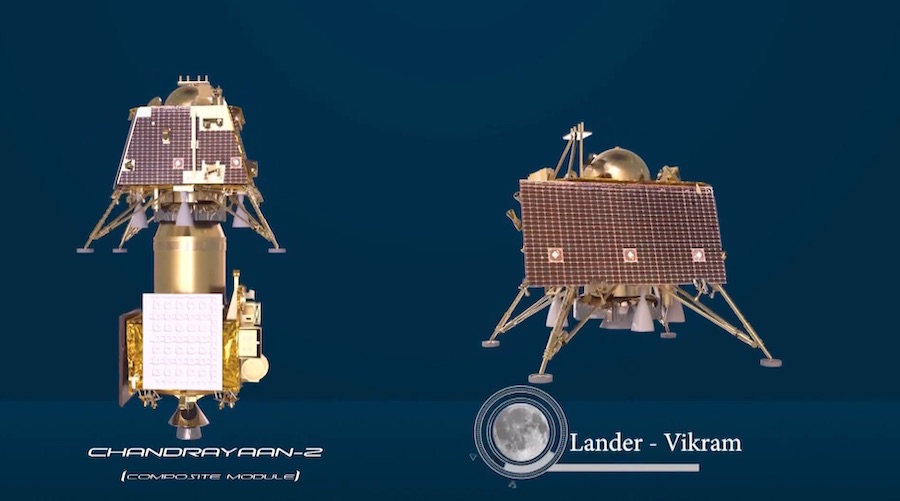
The Chandrayaan 2 spacecraft’s three components each carry a suite of scientific instruments:
- Orbiter
- Mass: 5,244 pounds (2,379 kilograms)
- Power: 1,000 watts
- Description: The Chandrayaan 2 orbiter — designed for a one-year mission — carries eight scientific instruments, including a high-resolution stereo imaging camera, a dual-frequency synthetic aperture radar look for evidence of water ice at the lunar poles, an imaging infrared spectrometer to aid in the search for water, and sensors to study the moon’s tenuous atmosphere. The orbiter will also provide data relay services the Vikram lander.
- Vikram Lander
- Mass: 3,243 pounds (1,471 kilograms)
- Power: 650 watts
- Description: The Vikram lander’s targeted touchdown zone is located in a highland region on the the near side of the moon at approximately 70.9 degrees south latitude, closer to the moon’s south pole than any previous lunar landing mission. Vikram will use five throttleable liquid-fueled engines to slow down for landing. The stationary landing craft carries a suite of multiple cameras and three science instruments, including a seismometer, a thermal probe to reach a depth of up to 33 feet (10 meters) to measure the vertical temperature gradient in the lunar crust, sensors to investigate plasma near the moon’s surface, and a NASA-provided laser retroreflector array to help scientists locate the lander’s exact position on the moon. The Vikram lander is designed to last 14 days on the moon, equivalent to one lunar day.
- Pragyan Rover
- Mass: 59 pounds (27 kilograms)
- Power: 50 watts
- Description: The solar-powered Pragyan rover has a range of up to 500 meters, or 1,640 feet, during its 14-day mission on the moon. The AI-enabled rover has six wheels and will relay science data and images through a radio link with the Vikram lander. Indian scientists installed an alpha particle X-ray spectrometer to measure the elemental composition of the rocks at the Chandrayaan 2 landing site, along with a laser-induced breakdown spectroscope. The Pragyan rover is named for the Sanskrit word for “wisdom.”
The launch of Chandrayaan 2 will mark the first operational flight of India’s GSLV Mk.3 rocket, following a suborbital test flight in 2014 and two successful orbital demonstration missions in 2017 and 2018.
Indian officials have selected the GSLV Mk.3 for the country’s human spaceflight program, which aims to send two or three astronauts into orbit on an Indian-built spacecraft by the end of 2021.
The photos below show the GSLV Mk.3’s rollout Sunday from the assembly building at Sriharikota.
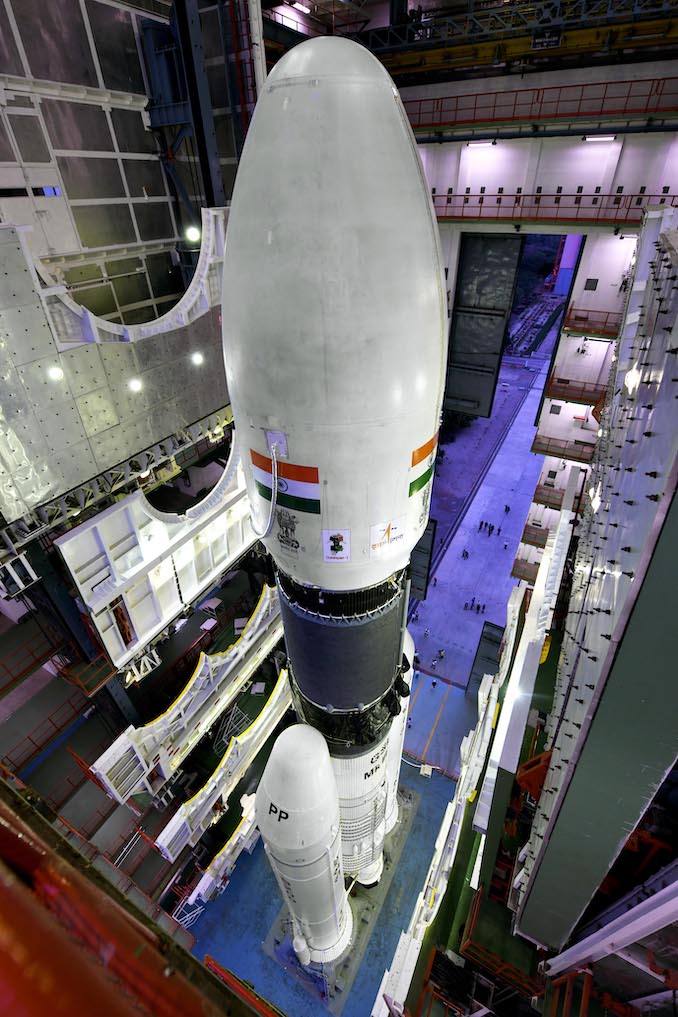
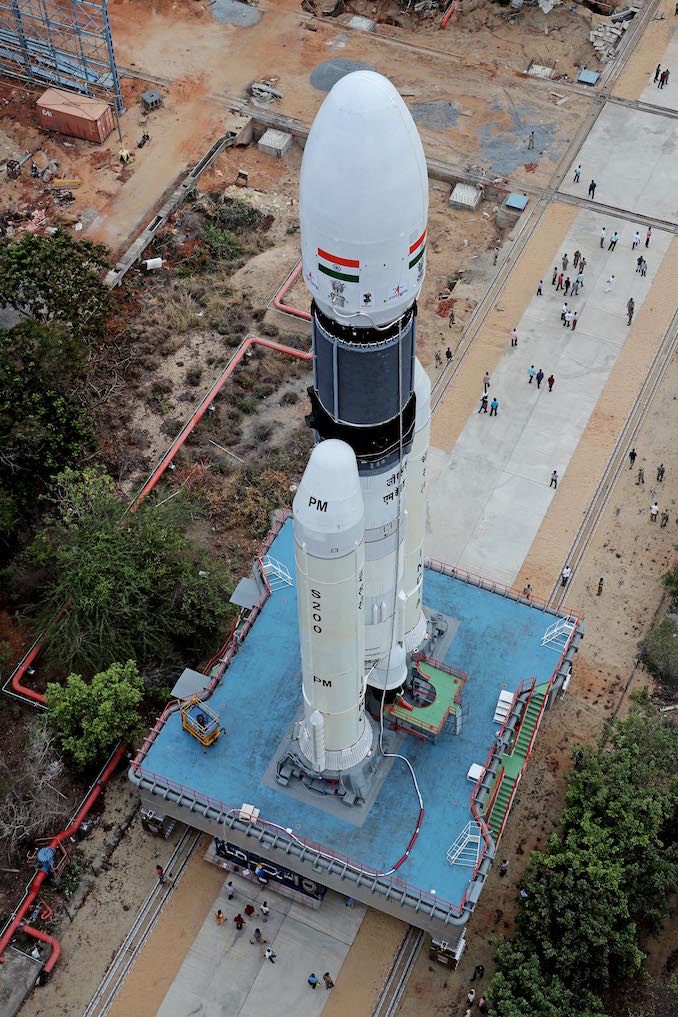
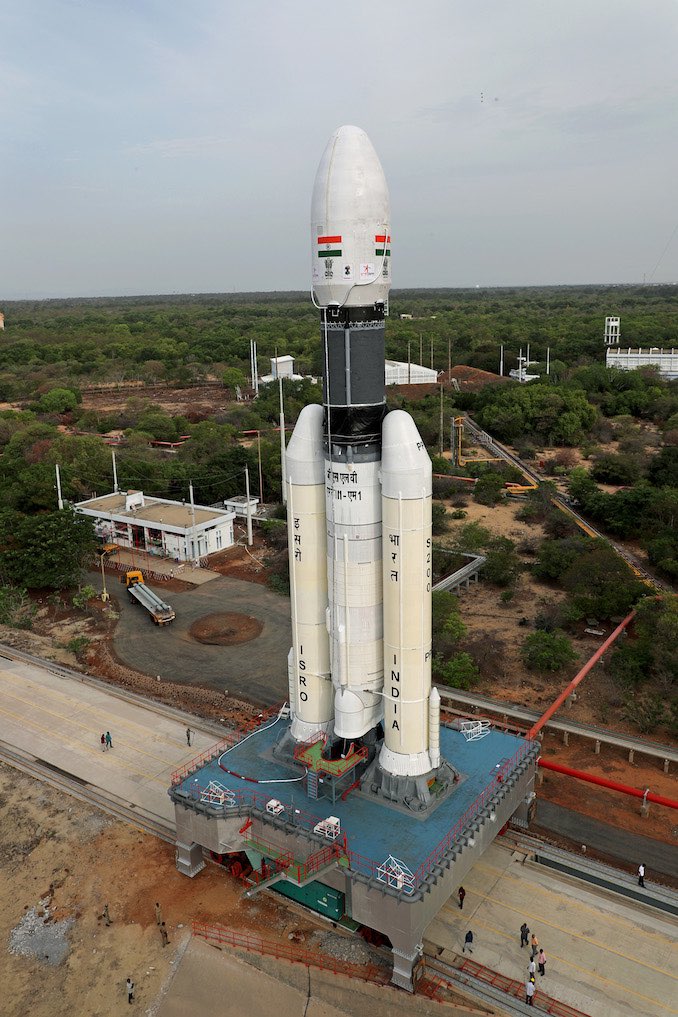
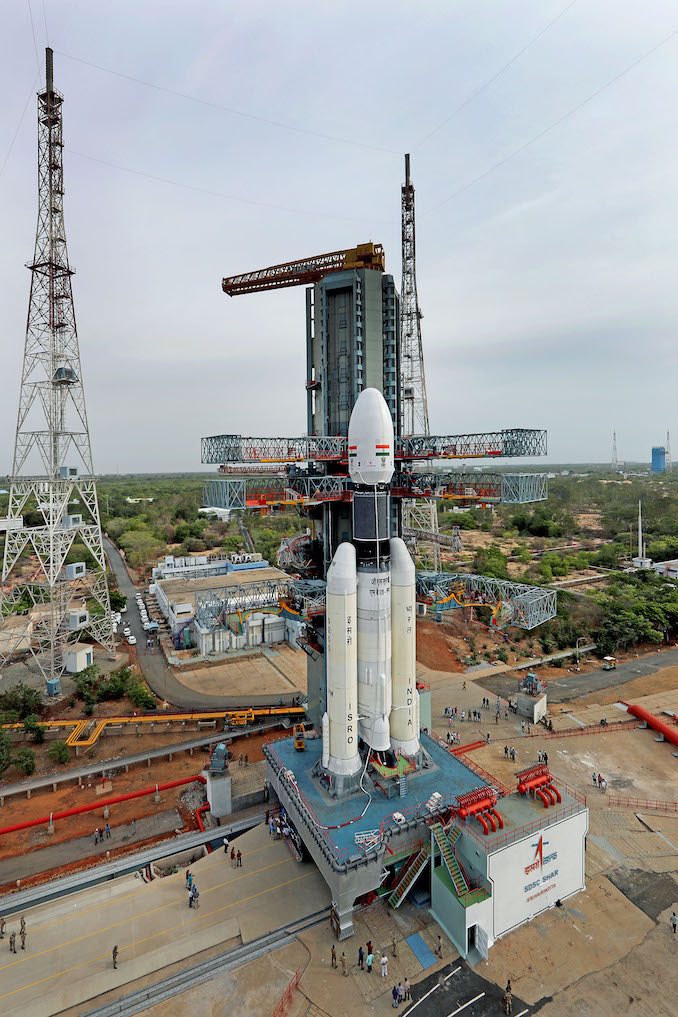
Email the author.
Follow Stephen Clark on Twitter: @StephenClark1.






